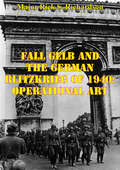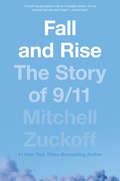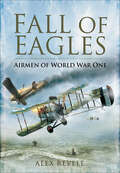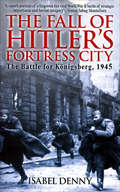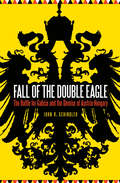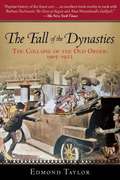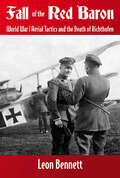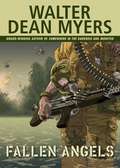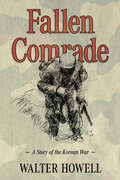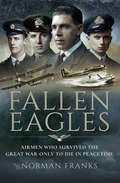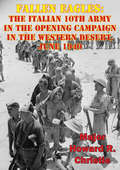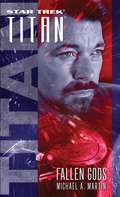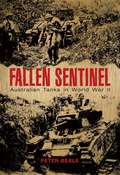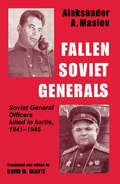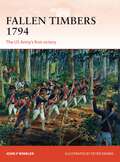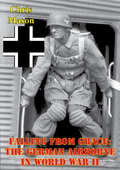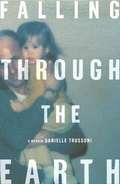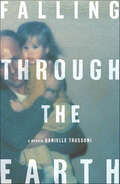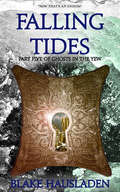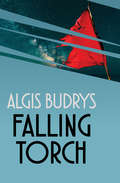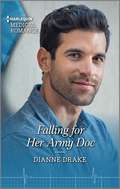- Table View
- List View
Fall Gelb And The German Blitzkrieg Of 1940: Operational Art
by Major Rick S. RichardsonThe objective of this study is to determine if the German "blitzkrieg" and Fall Gelb of 1940 were an expression of operational art. Despite the mythology surrounding Fall Gelb, the campaign does not constitute a major breakthrough in operational art by the Germans. Fall Gelb was not an expression of operational art. This conclusion is based upon an analysis using the approaches posed by U.S. Army and joint doctrine, Dr. James Schneider and Dr. Shimon Naveh.The purpose of this study is to examine more closely what is meant by "operational art" and to use those contemporary insights to re-examine German military operations in France in May 1940, Fall Gelb. Fall Gelb was chosen because it is a campaign that is frequently studied and often used and abused to illustrate various points relating to military operations. The study of the Fall Gelb campaign offers a glimpse of past operations through the lens of contemporary thought. That study provides the contemporary military professional an opportunity to improve his understanding of operational art through the study of a historical campaign.
Fall and Rise: The Story of 9/11
by Mitchell ZuckoffYears in the making, this spellbinding, heartbreaking, and ultimately uplifting narrative is an unforgettable portrait of 9/11. <P><P>This is a 9/11 book like no other. Masterfully weaving together multiple strands of the events in New York, at the Pentagon, and in Shanksville, Pennsylvania, Fall and Rise is a mesmerizing, minute-by-minute account of that terrible day. <P><P>In the days and months after 9/11, Mitchell Zuckoff, then a reporter for the Boston Globe, wrote about the attacks, the victims, and their families. After further years of meticulous reporting, Zuckoff has filled Fall and Rise with voices of the lost and the saved. <P><P>The result is an utterly gripping book, filled with intimate stories of people most affected by the events of that sunny Tuesday in September: an out-of-work actor stuck in an elevator in the North Tower of the World Trade Center; the heroes aboard Flight 93 deciding to take action; a veteran trapped in the inferno in the Pentagon; the fire chief among the first on the scene in sleepy Shanksville; a team of firefighters racing to save an injured woman and themselves; and the men, women, and children flying across country to see loved ones or for work who suddenly faced terrorists bent on murder. <P><P>Fall and Rise will open new avenues of understanding for everyone who thinks they know the story of 9/11, bringing to life—and in some cases, bringing back to life—the extraordinary ordinary people who experienced the worst day in modern American history. <P><P>Destined to be a classic, Fall and Rise will move, shock, inspire, and fill hearts with love and admiration for the human spirit as it triumphs in the face of horrifying events. <P><b>A New York Times Bestseller</b>
Fall of Eagles: Airmen of World War One
by Alex RevellThe Great War of 1914–1918 saw the rapid development of the airplane as a weapon of war. Initially its role was seen as that of reconnaissance, an extension of the cavalry, but as the war stagnated into static trench warfare, with each side facing each other across No Mans Land, the use of artillery, both in shelling enemy positions and counter-shelling his artillery, also became of prime importance. With the early development of radio communication between ground and air, airplanes also undertook the task of spotting for the artillery, and it soon became apparent that these airplanes both the reconnaissance machines and those working for the artillery could not be allowed to work unmolested, and fast fighter airplanes—both single and two seat began to make their appearance over the Western Front. Technical development was rapid. The mostly unarmed reconnaissance airplanes, and the early fighters of 1915 and 1916, armed with a single machine gun, had given way to fighters carrying two guns, flying at altitudes of over 16,000 feet and at treble the speed of the predecessors of 1914. With these developments a new type of soldier had evolved: the fighter pilot. Capable of fighting in the air, in three dimensions and at great speed, individual pilots began to emerge whose singular talents and temperament brought them to the forefront of their respective air forces. They became the aces, pilots who had brought down five or more of the enemy. Despite their expertise, few of these aces survived the war. The last combats of some are known and well documented, others are obscure. Some of the pilots in these pages are well-known, others less so, but all shared the common experience of fighting in the air during the war of 1914–1918: the conflict which saw the airplane evolve from a relatively fragile, unarmed reconnaissance machine, to a deadly weapon that changed the face of war for ever.
Fall of Hitler's Fortress City: The Battle for Knigsberg 1945
by Isabel Denny“A superb portrait of a forgotten but vital World War II battle of strategic importance and bestial savagery” (Simon Sebag Montefiore, New York Times–bestselling author of The Romanovs)Through firsthand accounts, as well as archival material, The Fall of Hitler’s Fortress City tells the dramatic story of the place and people that bore the brunt of Russia’s vengeance against the Nazi regime.In 1945, in the face of the advancing Red Army, two and a half million people were forced out of Germany’s most easterly province, East Prussia, and in particular its capital, Königsberg. Their flight was a direct result of Hitler’s ill-fated decision to invade the Soviet Union in 1941.The Russians launched Operation Bagration in June 1944, to coincide with the D-Day landings. As US and British forces pushed west, the Russians liberated Eastern Europe and made their first attacks on German soil in the autumn of 1944. Königsberg itself was badly damaged by two British air raids at the end of August 1944, and the main offensive against the city by the Red Army began in January 1945. The depleted and poorly armed German army could do little to hold it back, and by the end of January, East Prussia was cut off. The Russians exacted a terrible revenge on the civilian population, who were forced to flee across the freezing Baltic coast in an attempt to escape. On April 9, the city surrendered to the Russians after a four-day onslaught.“Denny fills in a gap in the historiography of World War II’s European eastern front.” —Booklist
Fall of Man in Wilmslow
by David LagercrantzJune 8, 1954. Alan Turing, the visionary mathematician, is found dead at his home in sleepy Wilmslow, dispatched by a poisoned apple. Taking the case, Detective Constable Leonard Corell quickly learns Turing is a convicted homosexual. Confident it's a suicide, he is nonetheless confounded by official secrecy over Turing's war record. What is more, Turing's sexuality appears to be causing alarm among the intelligence services - could he have been blackmailed by Soviet spies? Stumbling across evidence of Turing's genius, and sensing an escape from a narrow life, Corell soon becomes captivated by Turing's brilliant and revolutionary work, and begins to dig deeper. But in the paranoid, febrile atmosphere of the Cold War, loose cannons cannot be tolerated. As his innocent curiosity fast takes him far out of his depth, Corell realises he has much to learn about the dangers of forbidden knowledge.
Fall of the Double Eagle: The Battle for Galicia and the Demise of Austria-Hungary
by John R. SchindlerAlthough southern Poland and western Ukraine are not often thought of in terms of decisive battles in World War I, the impulses that precipitated the battle for Galicia in August 1914—and the unprecedented carnage that resulted—effectively doomed the Austro-Hungarian Empire just six weeks into the war.In Fall of the Double Eagle, John R. Schindler explains how Austria-Hungary, despite military weakness and the foreseeable ill consequences, consciously chose war in that fateful summer of 1914. Through close examination of the Austro-Hungarian military, especially its elite general staff, Schindler shows how even a war that Vienna would likely lose appeared preferable to the “foul peace” the senior generals loathed. After Serbia outgunned the polyglot empire in a humiliating defeat, and the offensive into Russian Poland ended in the massacre of more than four hundred thousand Austro-Hungarians in just three weeks, the empire never recovered. While Austria-Hungary’s ultimate defeat and dissolution were postponed until the autumn of 1918, the late summer of 1914 on the plains and hills of Galicia sealed its fate.
Fall of the Dynasties: The Collapse of the Old Order: 1905-1922
by Edmond TaylorOn June 28, 1914, in the dusty Balkan town of Sarajevo, an assassin fired two shots. In the next five minutes, as the stout middle-aged Archduke Franz Ferdinand of Habsburg, heir to the Austro-Hungarian throne, and his wife bled to death, a dynasty--and with it, a whole way of life--began to topple. <P><P> In the ages before World War I, four dynasties--the Habsburg, Hohenzollern, Ottoman, and Romanov--dominated much of civilization. Outwardly different, they were at bottom somewhat alike: opulent, grandiose, suffocating in tradition, ostentatiously gilded on the surface and rotting at the core. Worse still, they were tragically out of step with the forces shaping the modern world. The Fall of the Dynasties covers the period from 1905 to 1922, when these four ruling houses crumbled and fell, destroying old alliances and obliterating old boundaries. World War I was precipitated by their decay and their splintered baroque rubble proved to be a treacherous base for the new nations that emerged from the war. "All convulsions of the last half-century," Taylor writes, "stem back to Sarajevo: the two World Wars, the Bolshevik revolution, the rise and fall of Hitler, and the ongoing turmoil in the Middle East. Millions upon millions of deaths can be traced to one or another of these upheavals; all of us who survive have been scarred at least emotionally by them. " <P> In this classic volume, Taylor traces the origins of the dynasties whose collapse brought the old order crashing down and the events leading to their astonishingly swift downfall. <P><b>A New York Times Bestseller</b>
Fall of the Red Baron: World War I Aerial Tactics and the Death of Richthofen
by Leon BennettFighter pilot Manfred von Richthofen (the Red Baron) lacked innate aerobatic ability. As a tyro, he attempted to solve this problem through denial, going so far as to sneer at stunting as pointless. Great War air combat experience proved quite the reverse, and so we would anticipate a short and sad fighting life for the fellow. Yet the Red Baron became the Great War's single greatest scorer, as measured by total victories. How did he do it? This book is concerned with tactics, especially those tactics used by the Red Baron and his opponents. It offers the how and why of Great War aerial combat. The author leans heavily on his expertise in engineering and aerodynamic techniques to explain this, with his reasoning presented in a readable, non-mathematical style. Absent are both the usual propaganda-laced Air Service reports and psychobabble. Offered instead is the logic behind Great War aerial combat; i.e., those elements determining success or failure in the Red Baron's air war. Gunnery experience led to the machine gun as the weapon best suited for aerial combat. Joined with a suitable aircraft, the extremely successful Fokker diving attack resulted. In reaction, effective defensive techniques arose, using forms of shrewd tactical cooperation by two-seater crews: pilot and gunner. These are detailed. Numbers mattered, establishing the level of assault firepower. Tactics of machines flying together in formation are given, as well as those of 'formation busters', intent upon reversing the odds and turning large numbers into a disadvantage. A pilot's nature and emotions had much to do with choosing between the options defining tactics. What were the aces like? How were tactics tailored to suit personality? What traits made for the ability to grapple with a jammed machine gun? A dozen high achievers are examined in terms of tactics and background. In a fascinating study Leon Bennett covers all of these aspects of WWI aerial combat, and more. Similarly, the author turns his attention to examining the cause of von Richthofen's death, employing the tools of logic, rather than merely accepting one of the many conflicting eyewitness reports as truth. In doing so, much testimony is exposed as unlikely. The bullet scatter to be expected from ground anti-aircraft fire matters greatly, and is developed, along with the odds against lone riflemen hoping to hit a fast-moving low altitude target. The most dangerous altitude for front-line crossing is established. The author concludes by rating the possibility of a rifleman downing the Red Baron as quite realistic - certainly as likely as any of the more celebrated possibilities. This is an important book, offering a groundbreaking account of WWI aerial tactics, and a thorough examination of the final combat and death of the Red Baron.
Fallen Angels
by Walter Dean MyersOn a jungle battlefront where one misplaced step could be any soldier's last, every move can mean the difference between death and survival. Perry, Lobel, Johnson, Brunner, and Peewee are in Vietnam, all hoping to make it out alive.<P><P>Winner of the Coretta Scott King Medal
Fallen Comrade: A Story of the Korean War
by Walter HowellFallen Comrade: A Story of the Korean War presents an account of three young men from Clinton, Mississippi, who served in the US Marine Corps during the Korean War. Waller King, Joe Albritton, and Homer Ainsworth were childhood friends who grew up in the same neighborhood, went to the same schools, attended the same church, and eventually joined the same Marine Corps reserve unit in Jackson. Through extensive interviews with people who knew them, as well as excerpts from their letters and journals, this volume traces the life experiences of King, Albritton, and Ainsworth through their adolescence and into the war. Despite their shared origins, the three young men met different fates. Ainsworth was in Korea just two months before he was killed. Albritton and King returned home after the war, but Albritton died tragically in an automobile accident mere weeks later. King went on to college and experienced success in business, the joys of a family, and the rewards of community service, all of which were denied his childhood friends by their early deaths. Part biography and part military history, Fallen Comrade examines what happened to three young men from Clinton, their childhood in small-town Mississippi, their service as Marines in Korea, and their legacy to their hometown.
Fallen Eagles: Airmen Who Survived The Great War Only to Die in Peacetime
by Norman FranksThe 50 pilots featured in Fallen Eagles were all decorated for bravery during The Great War. All survived the conflict only to die flying in the postwar years.The causes of their deaths ranged from being casualties of small wars, then as now rife in the Middle East, mechanical failure or pilot error. The 1920s were still pioneering years for aviation and aviators and test flying, air races and displays, record attempts etc were fraught with dangers known and unknown.In addition to the better known names such as Sir John Alcock, Captain W Beauchamp-Proctor VC and Sammy Kincaid there are many that will be unfamiliar to all but the most ardent enthusiasts. But all have courage and love of flying in common and sadly luck ran out for each of these men who made a contribution to the history of flight. Thanks to acclaimed aviation historian Norman Franks, their names are not forgotten.
Fallen Eagles: The Italian 10th Army In The Opening Campaign In The Western Desert, June 1940
by Major Howard R. ChristieThe Italian Army developed a sound and unique combined arms doctrine for mechanized warfare in 1938. This new doctrine was called the "War of Rapid Decision." It involved the use of mechanized warfare in the Italian version of the blitzkrieg. This doctrine evolved from the lessons learned in the Italian-Ethiopian War of 1935 to 1936 and the Spanish Civil War of 1936-1939. With Italy's entry into World War II, military operations ensued along the Libyan-Egyptian border between the Italian 10th Army and a much smaller British Western Desert Force. The Italian Army in Libya outnumbered the British Army in Egypt by a ratio of four to one. The setting seemed to be ideal for the employment of the War of Rapid Decisions. Moreover, Marshal Rodolfo Graziani, who was the commander of the Italian 10th Army in North Africa during its first campaign in the western desert, had pioneered this new form of mechanized warfare during the Ethiopian War. Surprisingly, the Italian forces in Libya did not employ their new doctrine, reverting instead to more conventional techniques of "mass." It was Graziani's failure to utilize the doctrine which he had helped to develop that led to Italy's embarrassing defeat in 1941.
Fallen Gods (Star Trek: The Next Generation)
by Michael A. MartinThough the United Federation of Planets still reels from Andor's political decision that will forever affect the coalition, Captain William T. Riker and the crew of the U.S.S. Titan are carrying out Starfleet's renewed commitment to deep space exploration. While continuing to search the Beta Quadrant's unknown expanses for an ancient civilization's long-lost quick-terraforming technology-- a potential boon to many Borg-ravaged worlds across the Federation and beyond--Titan's science specialists encounter the planet Ta'ith, home to the remnant of a once-great society that may hold the very secrets they seek. But this quest also takes Titan perilously close to the deadly Vela Pulsar, the galaxy's most prolific source of lethal radiation, potentially jeopardizing both the ship and what remains of the Ta'ithan civilization. Meanwhile, Will Riker finds himself on a collision course with the Federation Council and the Andorian government, both of which intend to deprive Titan of its Andorian crew members. And one of those Andorians--Lieutenant Pava Ek'Noor sh'Aqaba--has just uncovered a terrible danger, which has been hiding in plain sight for more than two centuries. . . .
Fallen Leaders: Favorite Stories and Fresh Perspectives from the Historians at Emerging Civil War (Emerging Civil War Series)
by Chris MackowskiFallen Leaders: Favorite Stories and Fresh Perspectives from the Historians at Emerging Civil War recounts the fall of some of the most famous, infamous, and underappreciated commanders from both the North and South. The Civil War took as many as 720,000 lives and maimed hundreds of thousands more. The fallen included outstanding leaders on both sides, from a U.S. president all the way down the ranks to beloved regimental commanders. Abraham Lincoln, Stonewall Jackson, and John Reynolds remain well-known and even legendary. Others, like Confederate cavalry commander Earl Van Dorn, remain locked in infamy. The deaths of army commanders Albert Sidney Johnston and James McPherson and regimental leader Col. Elmer Ellsworth (the first Union officer killed) left more questions than answers about unfulfilled potential and lost opportunities. Thousands more have faded into historical obscurity. Others “fell” not from death or wounds but because of their own missteps or misdeeds, their reputations ruined forever. Theirs are falls from grace. This collection of essays by a host of writers brings together the best scholarship from Emerging Civil War’s blog, symposia, and podcast, all of which have been revised, updated, and footnoted. The collection also contains several original pieces written exclusively for Emerging Civil War’s 10th Anniversary Series. Expect new angles on familiar stories about high-profile figures. Meet leaders whose stories you might not know but whose losses were felt as deeply personal tragedies by those around them. This collection sheds new light and insight on some of the most significant casualties of the conflict: the fallen leaders whose deaths, injuries, and disgraces changed the Civil War.
Fallen Sentinel: Australian Tanks in World War II (Big Sky Publishing Ser.)
by Peter BealeAgainst the backdrop of the sweeping conquest of Western Europe by Hitler's mighty Panzer Divisions in WWII, Australia produced 66 cruiser tanks - the Sentinel tank - but none ever took the field of battle. The story of Australian tanks in WWII portrays governments under pressure and bureaucratic bungles that saw opportunities lost and precious resources squandered when the nation was under greatest threat. This careful dissection of government process in the crucible of war is a rare gem in an age when most wartime histories focus on the front-line soldier.
Fallen Soviet Generals: Soviet General Officers Killed in Battle, 1941-1945 (Soviet (russian) Military Institutions Ser.)
by Aleksander A. MaslovNo war has caused greater human suffering than the Second World War on Germany's Eastern Front. Victory in the war cost the Red Army over 29 million casualties, whose collective fate is only now being properly documented. Among the many millions of soldiers who made up that gruesome toll were an unprecedented number of Red Army general officers. Many of these perished on the battlefield or in prison camps at the hands of their German tormentors. Others fell victim to equally terrifying Stalinist repression. Together these generals personify the faceless nature of the war of the Eastern Front - the legions of forgotten souls who perished in the war. Covered up for decades, the saga of these victims of war can now be told and in this volume, A A Maslov begins the difficult process of memorializing these warrior casualties. Using formerly secret Soviet archival materials and personal interviews with the families of the officers, he painstakingly documents the fate of Red Army generals who fell victim to wartime enemy action.
Fallen Timbers 1794
by Peter Dennis John F. WinklerFollowing the defeat at Wabash, in 1792 the Washington administration created a new US Army to replace the one that had been destroyed. The man chosen to lead it was the famous Major-General "Mad" Anthony Wayne. Having trained his new force, Wayne set out in 1793 to subdue the Ohio Indians. Wayne faced many of the same problems as St Clair including the logistical and intelligence problems of campaigning in the wilderness, not to mention the formidable Ohio Indians. Wayne faced additional problems including the likelihood that he would have to fight both British and Spanish forces, not to mention an American army led by the celebrated commander George Roger Clark. He also faced an insurrection in western Pennsylvania, "Whiskey Rebellion", and a conspiracy led by many of his officers and contractors. Despite all these difficulties, Wayne managed to defeat the Ohio Indians at the battle of Fallen Timbers. This was a decisive defeat that led directly to the Treaty of Greeneville the following year which ended 20 years of conflict between the Americans and the Ohio Indians.
Falling From Grace: The German Airborne (fallschirmjager) In World War Ii
by Chris MasonIn the late 1930's, an aggressive and innovative rearmament program in Nazi Germany gave rise to the tactics of vertical envelopment. Pioneering the use of gliders as troop carriers, parachutists, and the air landing of reinforcements to exploit tactical success, the German Wehrmacht used the new technique of airborne warfare with startling success as part of the Blitzkrieg campaign against the Low Countries and France in 1940.-When the tactical doctrine used to seize bridges, strong points and road junctions in Fall Gelb was transferred to the seizure of an entire island that was heavily defended in 1941, however, the German airborne effectively committed suicide.-In ten days in May 1941, half the airborne forces in the entire German army were killed or wounded on Crete. Hitler wrongly ascribed the disaster to a playing out of the surprise factor, and banned further parachute operations until 1943.-The right conclusions were arrived at by the commander of the German airborne himself, General Kurt Student, in post-battle analysis. His own insistence on faulty tactics was devastating...The German innovation of vertical envelopment in the 1930's was as revolutionary to modern military tactics as the simultaneous development of the integrated combined arms offensive known today as the Blitzkrieg. In putting Billy Mitchell's ideas into practice, Luftwaffe General Student demonstrated vision, innovative thinking and practical military skill. Poor intelligence and reliance on his "spreading oil drops" tactics for the deployment of his paratroopers, the Fallschirmtruppe, on Crete, however, led directly to their removal as a significant weapon from the German arsenal in World War II.
Falling Through the Earth: A Memoir
by Danielle TrussoniFrom her father, Danielle Trussoni learned rock and roll, how to avoid the cops, and never to shy away from a fight. Growing up, she was fascinated by stories of his adventures as a tunnel rat in Vietnam, where he risked his life crawling headfirst into holes to search for American POWs held underground. Ultimately, Danielle came to believe that when the man she adored drank too much, beat up strangers, or mistreated her mother, it was because the horror of those tunnels still lived inside him. Eventually her mom gave up and left, taking all the kids except one: Danielle. When everyone else walked away and washed their hands of Dan Trussoni, Danielle would not. Now she tells their story. As Danielle trails her father through nights at Roscoe's Vogue Bar, scores of wild girlfriends, and years of bad dreams, a vivid and poignant portrait of a father-daughter relationship unlike any other emerges. Although the Trussonis are fiercely committed to each other, theirs is a love story filled with anger, stubbornness, outrageous behavior, and battle scars that never completely heal. Beautifully told in a voice that is defiant, funny, and yet sometimes heartbreaking, Falling Through the Earth immediately joins the ranks of those classic memoirs whose characters imprint themselves indelibly into readers' lives.
Falling Through the Earth: A Memoir
by Danielle TrussoniOne of the New York Times Book Review's 10 Best Books of the YearNew York Times bestselling author Danielle Trussoni's unforgettable memoir of her wild and haunted father, a man whose war never really ended.From her charismatic father, Danielle Trussoni learned how to rock and roll, outrun the police, and never shy away from a fight. Spending hour upon hour trailing him around the bars and honky-tonks of La Crosse, Wisconsin, young Danielle grew up fascinated by stories of her dad's adventures as a tunnel rat in Vietnam, where he'd risked his life crawling head first into narrow passageways to search for American POWs.A vivid and poignant portrait of a daughter's relationship with her father, this funny, heartbreaking, and beautifully written memoir, Falling Through the Earth, "makes plain that the horror of war doesn't end in the trenches" (Vanity Fair).
Falling Tides (Ghosts in the Yew #5)
by Blake Hausladen“Ghosts in the Yew, the initial effort from author Blake Hausladen, is a satisfying tale of the rebirth of a lost and forgotten nation...a triumph that I would recommend to all readers.” – Sam, GoodreadsThis novella is part five of Ghosts in the Yew, also available in a collection.Love and notes of wine swirls in the air while black clouds gather and an a terrible army begins to move.The battle is here.“Get ahold of yourself and be glad our lives here cost so much. A cheap and quiet life takes nothing. Your pain is the measure of how well you have lived.” The battle begins in this epic fantasy surrounded by the mystery of old gods, blood magic, and statecraft. Ignited by redemption and conquest, this journey will test their struggles to survive and will put them at odds with their families, their nation, and the very powers that shaped the world. But, this story is bigger than these things.It’s bigger than all of us."Ghosts in the Yew is one book you definitely do not want to miss!" – Runaway PenYou can read the trilogy in full volumes, or broken up into five novellas each.The Vestal Series1. Ghosts in the Yew Novella 1 - Beyond the Edge Novella 2 - Opposing Oaths Novella 3 - Reckless Borders Novella 4 - Bayen's Women Novella 5 - Falling Tides2. Native Silver Novella 1 - Sutler's Road Novella 2 - Forgotten Stairs Novella 3 - Thrall's Wine Novella 4 - Corsair Princess Novella 5 - Tanayon Born 3. The Vastness Novella 1 - Silent Rebellion Novella 2 - The River War Novella 3 - The Blinded Novella 4 - Crimson Valley Novella 5 - Singer's Reward“The story is complex and well laid out, the characters are interesting and well written, and the whole thing leaves you wanting - no, needing - the sequel.” – Natasha, Goodreads
Falling Torch: A Novel
by Algis BudrysTwenty years after Earth is conquered by invaders from space, the exiled US government has a chance to reclaim their lost planet 2513 AD. For the past generation, since Earth was taken over by the Invaders, the US president and his cabinet have lived in exile on a planet in orbit around faraway Alpha Centauri. The Centaurian colony has become the center of the human race, reducing Earth to a backwater region in a sprawling foreign domain. But the banished American leaders still have a powerful yearning to return home. Now, President Ralph Wireman and his government finally have the financial aid and weaponry needed to retake their native planet. Wireman&’s son, Michael, is parachuted to Earth as a Free Terrestrial, where the military-trained warrior is thrust into battle not between human and alien, but among factions of outlaw earthlings who demand nothing less than his total surrender. A novel about war, politics, and assimilation, Falling Torch also presents an incisive portrait of one man&’s aspirations of greatness and leadership.
Falling for Her Army Doc: Falling For Her Army Doc / Healed By Their Unexpected Family (Harlequin Lp Medical Ser. #1)
by Dianne DrakeShe’s helping him rediscover his memories… Can she also mend his heart?After an injury in Afghanistan, Mateo Sanchez finds himself in an amnesia clinic in Hawaii. Struggling to piece together how he arrived on the gorgeous island, Mateo may not be the easiest patient, but no-nonsense doctor Lizzie Peterson is determined to help the brooding ex-army doc. Only as Mateo begins to recover do they discover a bond and a temptation that’s so very hard to resist…From Harlequin Medical Romance: Life and love in the world of modern medicine.“...Ms. Drake has delivered a wonderful and very heartfelt read in this book where the chemistry between this couple was just as strong in the present as it was in the past; the romance was delightful and special because these two are meant to be….”—Harlequin Junkie on Second Chance with Her Army Doc““What an enthralling and fast-paced read Ms. Drake has delivered…that drew me in right from the beginning and kept me entertained all the way to the end because of the wonderful main characters….”—Harlequin Junkie on Healing Her Boss’s Heart
Falling for Her Captor: Zachary Black: Duke Of Debauchery Betrayed By His Kiss Falling For Her Captor
by Elisabeth HobbesA knight sworn to transport a captive heiress is tempted to go back on his word in this medieval romance.Kidnapped heiress Lady Aline of Leavingham has surrendered any hope of rescue when a mysterious figure casts her assailant aside. But it’s soon clear Aline’s savior has no intention of setting her free—he’s sworn to deliver her to the Duke of Roxholm, her family’s enemy!Sir Hugh of Eardham has never seen anything quite like Aline’s beauty and fighting spirit. There’s no doubt he’s tempted more to protect her than keep her bound. But could this loyal knight ever break his oath of allegiance for Aline’s sake?Praise for Falling for Her Captor“A satisfying read, with some great ambiance and a fast-paced romance, if you’ve not read this period before, then this is a great introduction to it.” —Marguerite Kaye“A feisty heroine, a drop-dead gorgeous hero, a nastier-than-real-life villain, and sweeping scenery make this a must-read for all historical romance readers.” —Cathy Skendrovich
Falling for Her Fake Fiancé (Meet Me at Niagara Falls #1)
by Amie DenmanFake Relationship?Or the start of something real…Jilted on her wedding day, tour guide Abigail Warren is saved from an accidental plummet over Niagara Falls by her former boyfriend. When the photo of captain Lyman Roberts rescuing a beautiful bride goes viral, Abigail and Lyman agree to pose as a &“real life&” couple for a local tourism campaign. But Abigail isn&’t ready to trust her heart to anyone—especially the guy who never saw Niagara Falls as home. When their summer of fake dating starts feeling surprisingly genuine, will Abigail and Lyman give their relationship a real second chance?From Harlequin Heartwarming: Wholesome stories of love, compassion and belonging.Meet Me at Niagara FallsBook 1: Falling for Her Fake FiancéBook 2: Falling for Her Ranger
